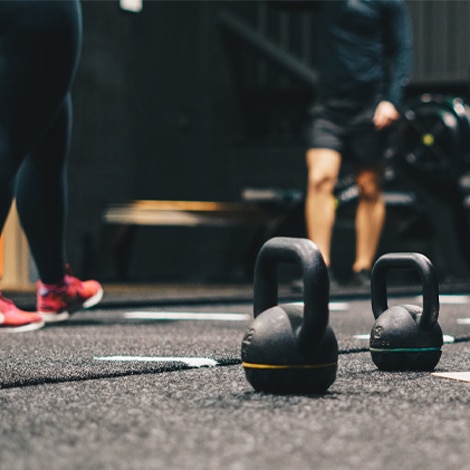Fusion Sport’s Chief Operating Officer Sue Robson has dedicated a large part of her career to Understanding the Female Athlete, a topic that has historically been somewhat less explored in the male dominated sporting world.
So in celebrating International Women’s Day we dive a bit deeper into understanding the female athlete with Sue, sharing some insights into her research over the years.
In particular, we’re going to look at how the female menstrual cycle can effect performance, and how that can be managed and mitigated with the right processes and education as a starting point.
Firstly, why do we need to single out the female athlete in high performance sport?
Physiologically, this comes down to the basics:
• Males don’t have a menstrual cycle
• Males don’t take oral contraceptives
• Males don’t go through menopause
• Males don’t get pregnant
The simple fact is these things can and do have an impact on health and performance, and should be considered when working with female athletes.
It’s important to consider: Could we be limiting female athlete participation and performance outcomes by not addressing this?
Starting the Conversation
As some of these things are often hard to talk about and we sometimes don’t have a lot of information around them, the first step in understanding your female athletes is opening a dialogue.
In her past roles as the Head of Physiology at the Scottish Institute of Sport, and the Director of Sports Science at The U.S. Ski and Snowboard Association (USSA), Sue Robson sat down with high performing and gold medal winning female athletes to do just that.
During these conversations, Sue realized this was actually the first time as an elite sports professional someone had had a conversation with them to go through their menstrual history, worked with them on performance intelligence and started working through information gathering with a view to improving their understanding of themselves and their performance.
“Out of the 20 athletes we gave our first health questionnaire, 50% had a menstrual cycle related piece that needed work. Something that could significantly impact on that athlete’s performance.”
This could be anything from having significant Premenstrual Syndrome (PMS) that they were not managing in the ideal way, to a more significant issue like Amenorrhea (lack of a menstrual cycle).
“The issues we were finding were well worth addressing, because we knew making a few small changes using current knowledge was going to have a big impact.
These were relatively easy fixes and wins – we’re not talking about long complex pieces for most of these athletes, we’re talking about relatively simple pieces.”
“In this small group of athletes, we were looking at, a lot of them were actually already proven performers and medalists in major games. We quickly realized that if we were missing things through our medical profiling with our most elite athletes – how much were we missing with the rest of our female athletes?”
These conversations marked a turning point in the way Sue worked with female athletes in her roles at the time, and started her on a path toward more strategic planning to assess female athletes, mitigate any health risks and strategically plan for improved performance.

Education for Athletes and Staff
The most obvious thing that became apparent, and is still prevalent, is that the female athletes actually knew very little about themselves and were hungry for more information.
“They don’t realise that when they are given an oral contraceptive, they have a choice in products and there could be an option that suits them better. They don’t know enough to realise that oral contraceptives and menstrual cycles should be flagged with their coach and support staff as health aspects that could impact their performance and longer term health, and can be better managed.”
For Sue, understanding an athlete’s menstrual cycle history is a necessity, and actually gives medical staff, trainers and performance coaches the opportunity to get a deeper insight into the athlete’s overall health, and flag health issues before they become serious.
“I often think of the menstrual cycle as an additional flag – we have an in-built early warning system that you don’t have in the male athlete and this should be seen as a critical advantage in monitoring and adapting to load and overload.”
The Benefits of Looking at the Menstrual Cycle
Understanding the Menstrual Cycle means we can identify health issues and minimise risk involved with:
• Amenorrhea (lack of a menstrual cycle)
• Bone Density
• Optimal Iron Status
• Pregnancy
• Menopause
These are all common health concerns for female athletes related to the menstrual cycle and associated hormones, which can affect short term and long term performance.
The other significant benefit is around optimizing athlete training and thereby performance potential. With more information, coaches and staff can look at strategic planning around cycle-based response changes, and optimize training:
• To maximise strength training exercises
• For oscillating aerobic and anaerobic loading
• Understanding skill transitions and risks
• Minimising stress response and illness
Where to from here with Female Athlete Health?
For sporting teams and high-performance organizations you can start by taking some simple steps:
1. Ensure you are educating your staff and your athletes on the importance of female health, associated effects on performance and risk.
2. Systemize your conversations – put comprehensive, private questionnaires in place as part of your medical screening.
3. Personalize your conversations – have a medical team on hand to speak to your athletes on a more personal level to consolidate information and offer guidance.
4. Create a strategy around any issues that have been flagged
5. Maintain and analyze data on your athlete’s daily health and wellness to ensure optimal performance
One example of how to manage all your medical records, daily health and wellness and training data in one place is by utilizing an athlete management platform.
Currently, we have organizations like the Scottish Institute of Sport, the Australian Institute of Sport and some AFLW teams to name a few using Smartabase to do exactly this. Their female athletes have specific metrics that are measured and tracked through the system, so that staff are able to track specific aspects of their health.
Further Research
Sue was institutional in creating organizational change for female athlete health for the Scottish Institute of Sport and the USSA. Her journey is outlined in a talk she gave in 2011 Understanding the Female Athlete, accessible here.
A list of research articles related to the topic can be downloaded here.
For more information on customizing your Smartabase athlete management platform to cater for female athletes feel free to get in touch.







